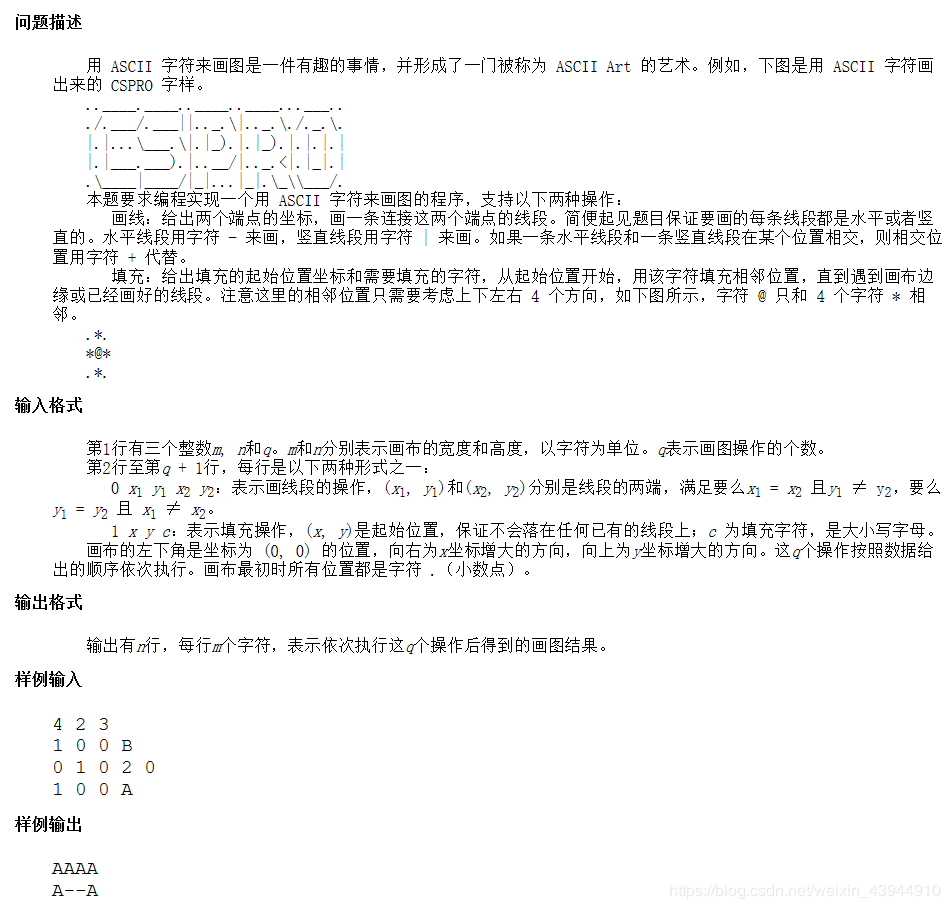CCF CSP 201512-4 画图
♔题目

♔解题思路
这一题是比较简单的模拟题,只要按照题目要求读入然后进行处理即可。线段部分要注意当纵坐标相等时是横线,当横坐标相等时是竖线,然后注意处理线段相交的地方改为‘+’(‘+’也改为‘+’或跳过)。填充部分用bfs进行遍历,然后遇到线段和边界停止。
虽然简单,但还是有坑点在的。首先是题目中给定的坐标与日常使用数组下标的习惯不符,于是我们对其进行一个转化x’=n-y,y’=x+1。然后要注意**坐标不要写反!**我就是因为这个wa到怀疑人生(不过居然填充字符之前把坐标写反还能拿到90分)

然后在差错的过程中还遇到几个坑点,一个是dfs可能会爆栈,另一个是当一条线段经过一条线段端点时不要将‘+’修改掉。注意以上几点应该就可以解决这个问题了。
♔代码
1 |
|
